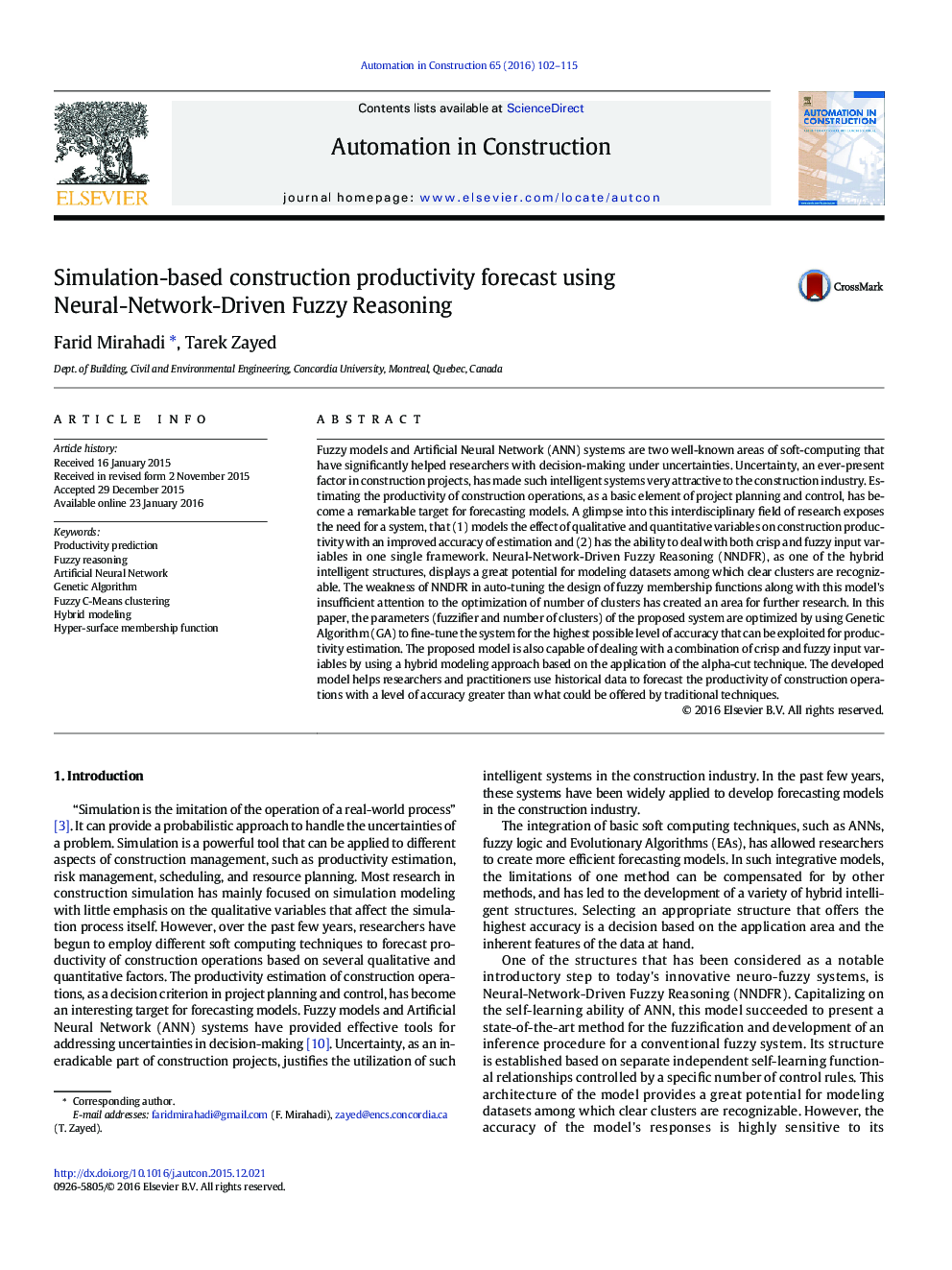| کد مقاله | کد نشریه | سال انتشار | مقاله انگلیسی | نسخه تمام متن |
|---|---|---|---|---|
| 246266 | 502356 | 2016 | 14 صفحه PDF | دانلود رایگان |
• We modeled productivity estimation of concrete pouring process.
• We improved a neural network driven fuzzy reasoning system.
• The model is fine-tuned through Genetic Algorithm technique.
• The model accuracy stands higher than ANFIS, ANN and traditional NNDFR.
• We applied the model to hybrid (Fuzzy-Crisp) approach of simulation.
Fuzzy models and Artificial Neural Network (ANN) systems are two well-known areas of soft-computing that have significantly helped researchers with decision-making under uncertainties. Uncertainty, an ever-present factor in construction projects, has made such intelligent systems very attractive to the construction industry. Estimating the productivity of construction operations, as a basic element of project planning and control, has become a remarkable target for forecasting models. A glimpse into this interdisciplinary field of research exposes the need for a system, that (1) models the effect of qualitative and quantitative variables on construction productivity with an improved accuracy of estimation and (2) has the ability to deal with both crisp and fuzzy input variables in one single framework. Neural-Network-Driven Fuzzy Reasoning (NNDFR), as one of the hybrid intelligent structures, displays a great potential for modeling datasets among which clear clusters are recognizable. The weakness of NNDFR in auto-tuning the design of fuzzy membership functions along with this model's insufficient attention to the optimization of number of clusters has created an area for further research. In this paper, the parameters (fuzzifier and number of clusters) of the proposed system are optimized by using Genetic Algorithm (GA) to fine-tune the system for the highest possible level of accuracy that can be exploited for productivity estimation. The proposed model is also capable of dealing with a combination of crisp and fuzzy input variables by using a hybrid modeling approach based on the application of the alpha-cut technique. The developed model helps researchers and practitioners use historical data to forecast the productivity of construction operations with a level of accuracy greater than what could be offered by traditional techniques.
Journal: Automation in Construction - Volume 65, May 2016, Pages 102–115
